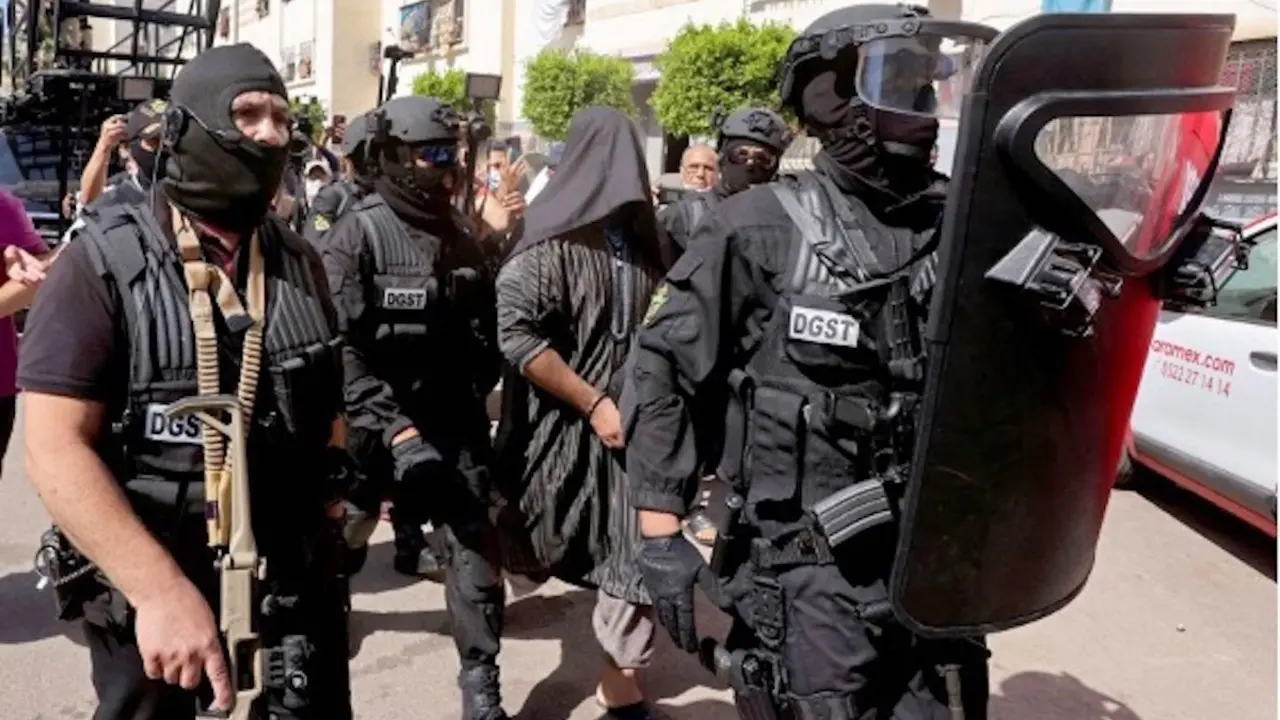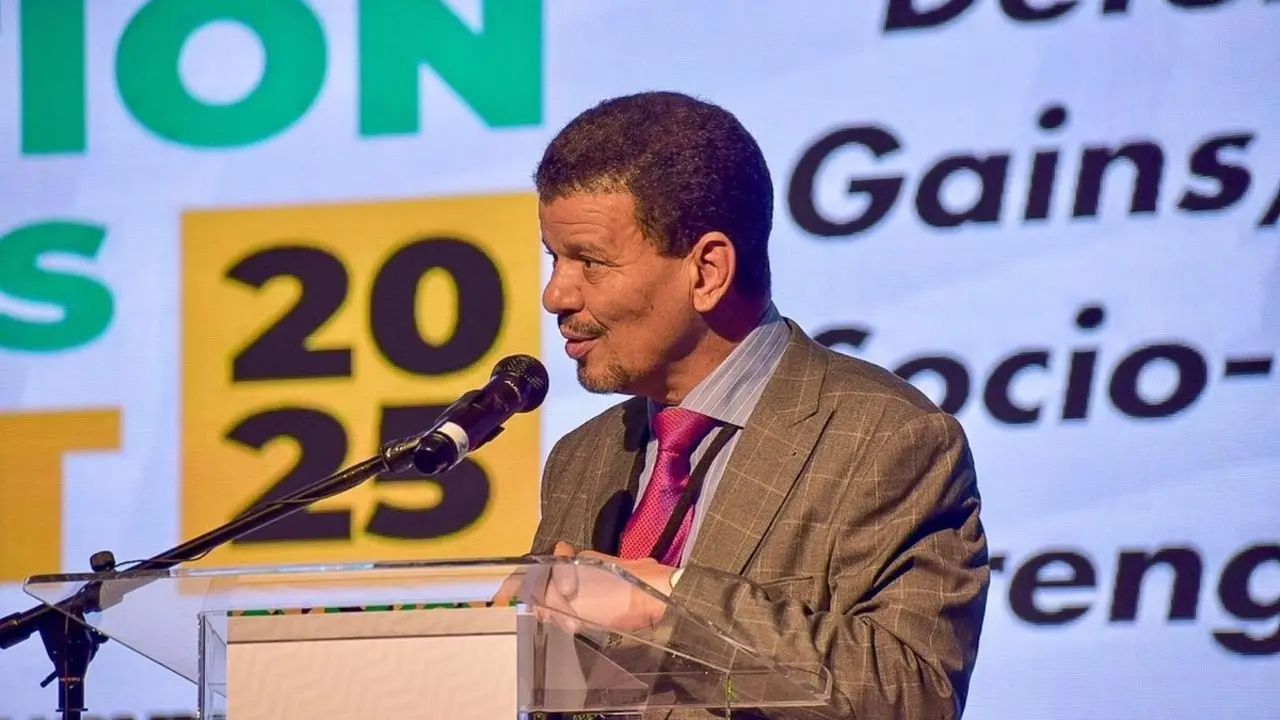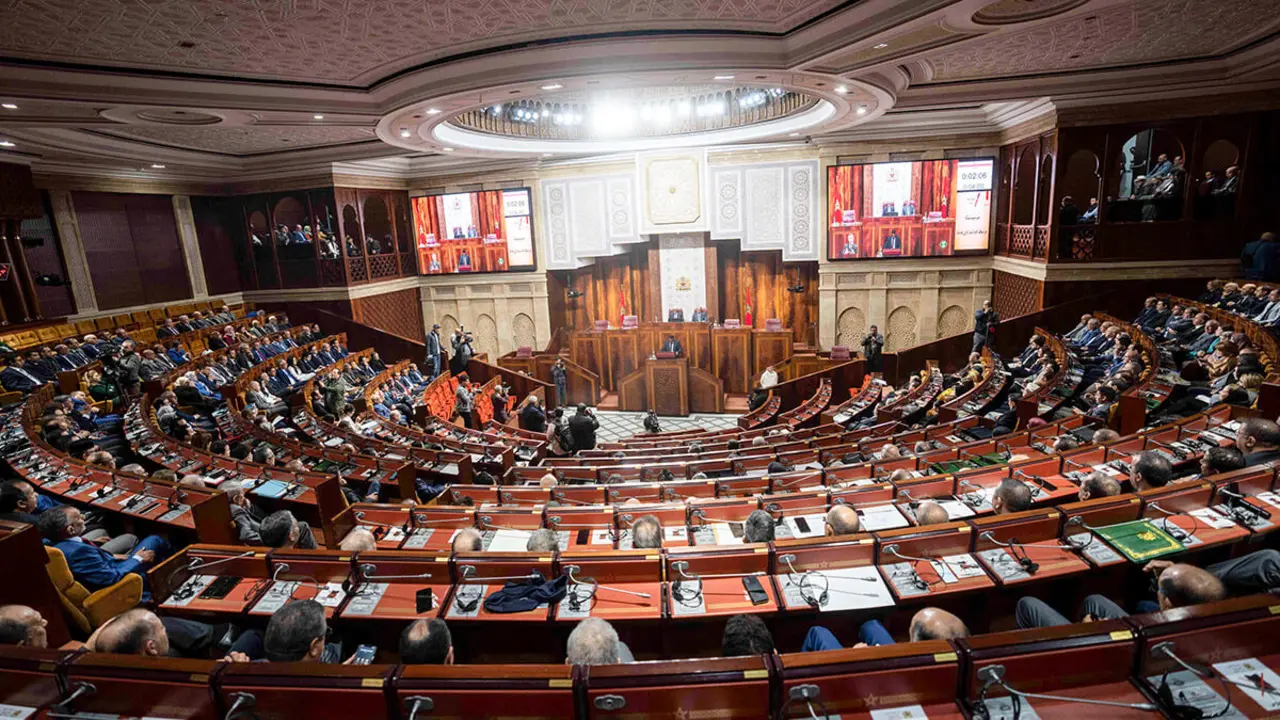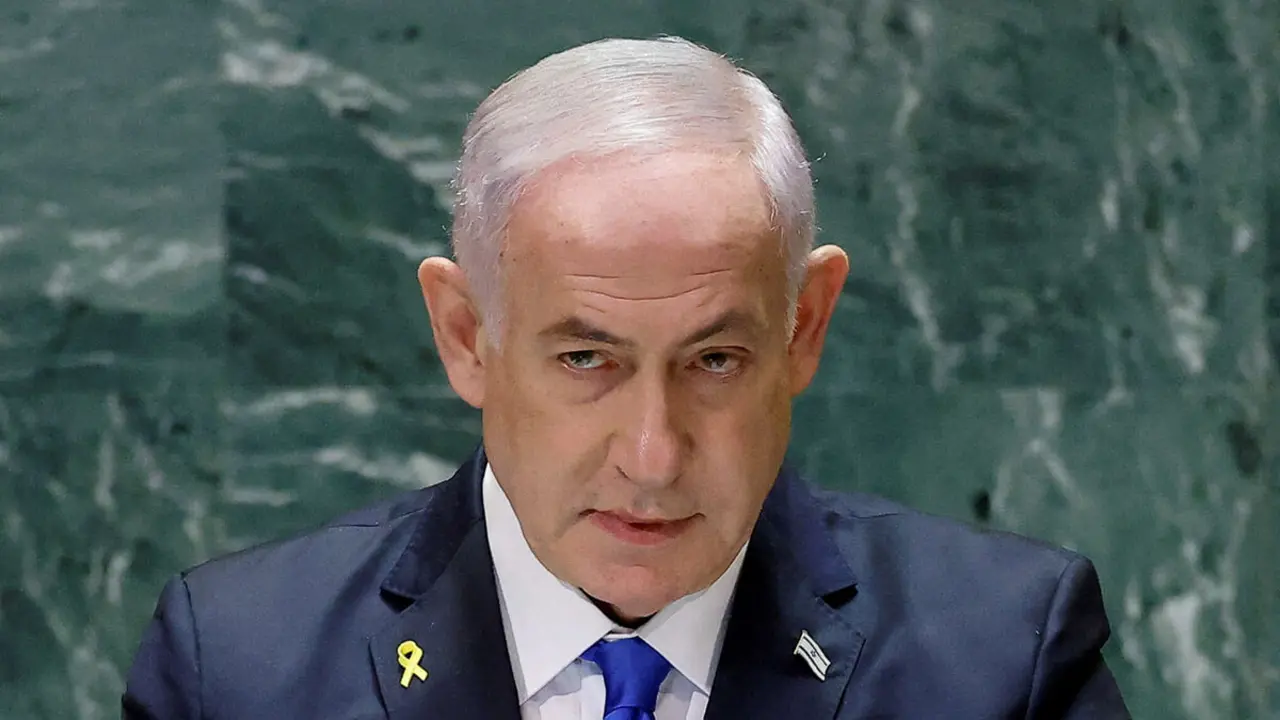Rachid Raha, presidente de la AMA: "En 43 años de lucha, la amazighidad ha conseguido muchos logros, pero sigue siendo insuficiente"

During several days all the cities and all the villages of Kabylia were in boiling. The Berber volcano poured its lava to Algiers revealing to the world a cause, until now taboo, which has for name "Tamazight" or "Amazighity" better known under the French name "Berber". Neither the arrests of dozens of demonstrators nor the repression that fell on the entire Kabyle population got the better of the fierce will of young militants eager to reconnect with their history of free men obscured by the intrusion of a pan-Arabism that was totally foreign to Algeria and to all of North Africa.
Since April 20, 1980, the Amazigh cause has been taken up by the peoples of this area that stretches from the Siwa oasis in Egypt to the Canary Islands in Spain. This space was called Tamazgha. The country of the Free Men which is the exact translation of "Amazigh".
To talk to us about the achievements of this struggle and its prospects, we can not find better than Rachid Raha, the president of the Amazigh World Assembly. This tireless activist, 59 years old, born in Nador in the Moroccan rif, considered as one of the strongholds of the Amazigh struggle, devotes all his life and all his energy to this cause in which he deeply believes. Journalist, anthropologist and political activist, he is the author of several books and publications in French, Spanish and Amazigh languages in which he exposes the fruits of his research and expresses his thoughts.
And as there is behind every great man a woman, Rachid Raha relies on Amina Ibnou Cheikh, his wife and mother of his only son, to give him advice and support and to brilliantly manage the fundamental tool of his struggle, the monthly magazine "le Monde Amazighe" published in three languages, Amazigh, Arabic and French.
Through this interview that he was kind enough to grant us, Rachid Raha gives us an update on the achievements of 43 years of struggle to give Tamazight back the place it deserves on its own land.
Celebrating the 43rd anniversary of the Berber Spring, in your capacity as President of the World Amazigh Association, would you please give us a brief overview of nearly half a century of struggle for the rehabilitation and promotion of the Amazigh culture?
Indeed, since the "Berber spring", - which took place on April 20, 1980 at the university of Tizi-Ouzou following the prohibition of the conference of late Mouloud Mammeri on the Kabyle poetry -, until today many things happened, many events took place and great changes took place. The consciousness of identity, political or cultural, of the "Amazigh fact" has spread from Kabylia to other Algerian regions, has crossed the sea to the Amazigh diaspora in France, and then in Europe, and has surpassed the artificial borders of the North African countries. With the fall of the Berlin Wall in 1989, the people woke up and freed themselves from authoritarianism. The Amazighs did not remain on the sidelines. There was a great cultural revival by the multiplication of the creation of associative fabric and the active mobilization of the civil society through the organization of cultural, artistic and academic activities.
Major events have taken place since then, such as the school bag strike in Kabylia in 1994 and 1995, which consisted in boycotting school until the authorities introduced the teaching of the Amazigh language in public schools. On May 1, 1994, Moroccan activists were detained and imprisoned for daring to hold up a banner written in Tifinagh. Then there was the unfortunate "black spring" of 2001 when the Algerian gendarmerie murdered 126 young people with impunity without anyone being brought to court! ... But one of the most significant events of the Amazigh dynamism is the fact of tearing off the recognition of the officiality of the native Amazigh language in 2011 in Morocco and in 2016 in Algeria!
While the Algerian Amazigh community is the trigger of the Amazigh awakening and was at the forefront of cultural claims, we note today that in Morocco we record important achievements, the most recent of which is the establishment in the Moroccan parliament of simultaneous translation from and into the Amazigh language in plenary sessions. Do you think that in Algeria there is a slowing down of the struggle?
In Morocco, where any political formation based on Amazighity has been banned (the case of the PDAM created by the late master and friend Ahmed Adghirni), the Amazigh cause has received great attention from the authorities, even if the conservative government of the PI and the Islamist government of the PJD have tried to put obstacles in the way of its promotion, because of their Arab-Islamist retrograde ideology, and despite its recognition by the Head of State, King Mohamed VI, in his famous speech of Ajdir on October 17, 2001.
Today, with the new government of Aziz Akhennouch, who had assumed in the election campaign of September 8, 2021 of his party the RNI, the claims of the Amazigh movement, the Amazigh cause has become a matter of state. His government has the merit, for the first time in the political history of independent Morocco, to dedicate a budget for the implementation of the official character of the Amazigh language within the administration.
Thus, in the courts and in the chambers of the parliament we count, henceforth, with translators in native language. On the other hand, the weak point of this new liberal government is the underestimation of the importance and urgency of the generalization of the Amazigh language in preschool and primary school, from the current Minister of National Education! Something that we have just denounced recently to the World Bank.
If, today, in Morocco, the Amazigh question is no longer a taboo, as it was during the seventies and eighties (when the linguist Boujemaâ El Habbaz was murdered for the simple reason of doing a thesis on his mother tongue, or the historian Ali Asadqi Azayku was imprisoned in 1981 for having dared to ask to revise the official history!), in Algeria, unfortunately, the situation has deteriorated a lot. And this unfortunate demotion has become increasingly aggressive since the emergence of the "Aarouchs" movement in 2001 and the "Hirak of Algeria" of February 2019 where the authorities began to ban Amazigh flags. With the illegitimate and anti-democratic government of Abdelmajid Tebbounne and General Said Chengriha, the repression has taken on unprecedented, incomprehensible proportions. The police and judges in the pay of the military junta continue to imprison hundreds of Amazigh activists, human rights defenders and journalists. Added to this is the persecution and unfounded accusations of movements of a pacifist nature classified as terrorists, as is the case of the Movement for Self-Determination of Kabylia (MAK)!
You have visited Libya and Tunisia where Amazighity was in a state of abandonment, what progress has been made in these two countries?
Last year, indeed, I had the opportunity to visit Tunisia and Libya. In these two countries, the Amazigh question evolves positively and very differently. If in Tunisia, the claim is assumed more and more by Arabic-speaking and Arabicized Tunisians, it remains of cultural essence. However, in Libya, the Amazigh question has become crucial for the future of this country, and more particularly, for the Amazigh populations of the coastal region of the Zouaras and the tribes of Jebel Nefoussa, and the Tuareg communities in the southwest. What I admire about the Libyan Amazigh, unlike the Tuareg revolutionaries of Azawad (in northern Mali), is that at the same time as they were engaged in the revolution against the dictator Muammar Gaddafi, they were undertaking a cultural revolution, based fundamentally on the teaching of the Amazigh language and its Tifinagh script to the pupils of their popular schools. It is really an extraordinary experience. They did not wait for its recognition in the Constitution nor the decisions of the central authorities, in this case the Ministry of National Education!
What about Amazighity in the Canary Islands, where the city of Tafira hosted the first Amazigh gathering in 1997?
In the Canary Islands, which I just visited in February, unfortunately, the regional government and local authorities do not do much to promote Amazigh culture. Canarian Amazigh activists even confessed to me that the holding of the First Congress of Amazighs of the World that we organized in Tafira in August 1997 was more detrimental to them than encouraging! Generally, those who defend the most the Amazighité and the Africanité of the Islands are the independentist militants, sympathizers of the late master Antonio Cubillo (companion of the late Mouloud Mammeri of whom I made the acquaintance in Tizi Ouzou at the "Berber spring" of April 20, 2000) and of the movements stemming from the successive divisions of his anticolonial movement, that have the courage to constantly link the history and anthropology of the Canary Islands Guanche population to that of the continent, that is, to Tamazgha, instead of the Iberian Peninsula.
The great paradox of the Canary Islands is that archaeology is given enormous importance and all the islands have 150655 superb and rich ethnographic museums. But unfortunately, some Canary intellectuals, journalists and archaeologists try to dissociate them from the Amazighs at all costs. As Chona Del Toro, president of the Azar association, told me, they want us to believe that the ancestors of the Guanches had wings and came down from the sky!
However, what attracted my attention more is that the "Spanish" educational authorities convey the false idea that the Canary Islands are learning their own language, a rather special language, since it differs just a little from the Castellan language on the phonetic level, and that it is considered an authentic language of the Regional Autonomy of the Canary Islands, like Catalan in Catalonia or Euskera in the Basque Country, while the real language of the Canary Islands is a variant of the Amazigh language, very close to Tachelhit, which they lost just around the eighteenth century!
Precisely, about the language, the detractors of Amazighity reproach him the absence of a unique language which constitutes the unifying cement of Imazighen. What do you intend to do to achieve this project of unification of the Amazigh language?
Normally, as I had already written in the Moroccan magazine Tifinagh No. 7 of September 1995, the common Amazigh language already exists, and quite simply, it is the Middle Atlas language! This is normal, because this mountainous region of central Morocco is quite far from the coast. This is what saved it from Punic, Roman, Turkish, Arab and European settlers linguistic and cultural influences. A language that retains all its authenticity. And my personal thesis, without being a linguist, was validated when Miloud Taifi of the University of Fez had compared texts from different Amazigh-speaking regions of Morocco and Algeria (Kabyle) he found that the most shared lexicon is that of the speakers of the Middle Atlas. Something that the Rifa linguist Mohamed Seroual of the University of Tetuan had confessed to me when he was preparing his doctoral thesis on the Rifa dictionary. On the syntactic level, likewise, the linguist from the University of Toulouse Michel Quitout, by comparing the grammar of several languages, came to almost the same conclusion: it is the language of the Zayan tribes that has the most linguistic kinship with the other Moroccan and Algerian languages. Even Michael Peyron, one of the greatest connoisseurs of Amazigh literature, supports my idea. Moreover, on the subject of neology, the late Mouloud Mammeri was one of the pioneers in formulating a standard dictionary, drawn from Tuareg sources, still within the most isolated desert regions of the world! In the monthly publication, "Le Monde Amazigh" or Amadal Amazigh, the translations into Amazigh for the companies and the Tamazight courses that we published, were always adopted from the standard speech of the Middle Atlas.
Moreover, in our ambitious political project of "Manifesto of Tamazgha", whose objective is the construction, in the future, of a true Union of the States of North Africa, inspired by the example of the European Union, we advocate that the Amazighs will have to assume bilingualism, that they keep their regional languages within the political autonomy of their native region and to learn, next to it, the standard Amazigh language, in order to set it up to be the communication medium of all North Africans, and of all Amazighs, instead of doing it in Arabic or in French language! (*)
The teaching of Tamazight in the two leading countries, Algeria and Morocco, is far from meeting the expectations of the populations since Tamazight is taught in only a few schools and in only a few regions. What do you plan to do for the generalization of the teaching of Tamazight at least in these two countries?
Indeed, despite the fact that the Amazigh language is recognized as an official language, alongside Arabic, in Morocco and Algeria, -a dream realized by the pioneers and all Amazigh activists- the Amazigh language, unfortunately, is losing ground. It is in danger of disappearing in some areas, such as Ghomara and Senhadja Srair in the Rif or Figuig! Amazigh-speaking parents in some urban centers prefer to speak to their children in "darija", dialectal Arabic, believing that they facilitate the integration of their children in school. They are totally mistaken and this is what I have just pointed out in my recent correspondence to the World Bank officials, deposited at its headquarters in Rabat on April 10, where I warned them of the urgent need to generalize the teaching of the Amazigh language at the preschool and primary levels, while waiting to extend it to the secondary cycle. This is the most effective and appropriate way to save the school and childhood of our North African countries. This would contribute, without any doubt, to the success of the International Decade of Indigenous Languages 2022-2032 and to ensure the survival of the thousand-year-old Amazigh* indigenous language.
(*)http://amamazigh.org/2018/10/manifeste-de-tamazgha-pour-une-confederation-democratique-sociale-et-transfrontaliere-basee-sur-le-droit-a-lautonomie-des-regions-2/
(**) http://amamazigh.org/2023/04/lassemblee-mondiale-amazighe-interpelle-la-banque-mondiale-sur-le-sujet-de-la-sauvegarde-de-lecole-marocaine/









